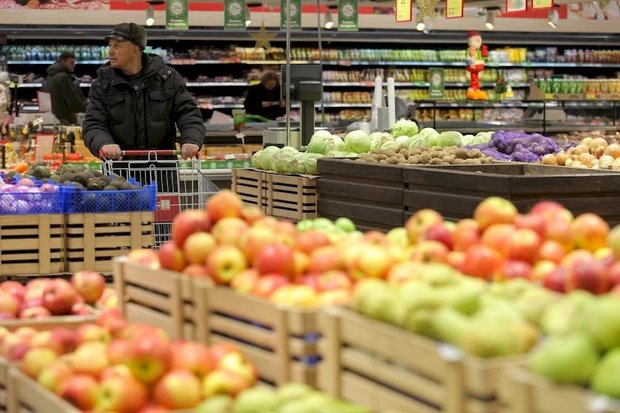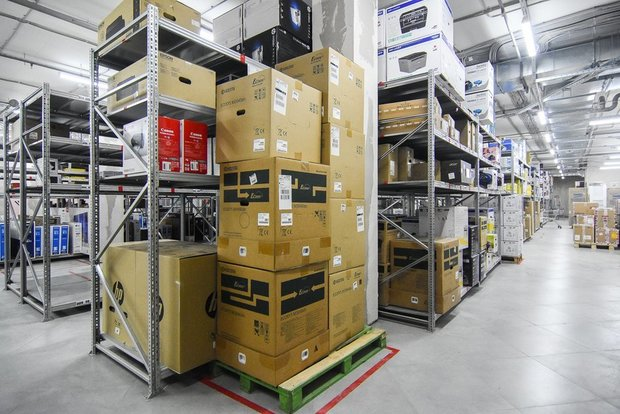Elvira Nabiullina: banks shouldn’t shift preferential mortgage risks to people
The chairwoman of the Central Bank explained how inflation propelled the key rate to 7,5% and warned that banks shouldn’t turn preferential mortgage rates into floating ones
The Central Bank raised the rate too much, and it was unexpected. Moreover, this happened on the eve of the lockdown when the whole economy is getting prepared for it. So the Central Bank sees the lockdown as a pro-inflationary factory, that’s to say, an attempt of keeping the growing demand amid the shrinking supply. Doesn’t it seem that your pin with an arrow pierces the heart of the economy with a double shock? It has one shock, now it is the second one, representatives of foreign media were surprised with the sudden rise in the key rate of Central Bank. Head of the Bank of Russia Elvira Nabiullina explained the tightening monetary policy with the fact of accelerating inflation, which might rise up to 7,4-7,9% by the end of the year. The Central Bank doesn’t rule out that it would raise the rate by an entire percentage point in December, to 8,5% a year.
Ballooned rate: the Central Bank is ready to keep 7,5% for another year
On the threshold of the introduction of the next stage of restrictions across the country, the Bank of Russia made another sudden decision and abruptly raised the key rate to 7,5% a year. Moreover, the Central Bank intends to hold it high until the middle of 2023. Governor of the Central Bank Elvira Nabiullina claimed this on 22 October at a traditional briefing for journalists, which is convened after the Bank of Russia’s every board meeting on the regulation of the monetary policy. While a kind of hint to the meaning of the Bank’s actions is habitually interpreted through the pin of Mrs Nabiullina’s jacket lapel. It is considered that it drops a hint to the context of the economic situation in the country.
On 22 October, Elvira Nabiullina put a pin of a bow with an arrow on. Seemingly, pulling back the bowstring to fire an arrow can anyway be considered as a preface to the fight against accelerated inflation while the key rate hike to 7,5% a year is just the first non-standard approach on this road. Opening the briefing, the head of the Central Bank admitted that the October key rate by 75 pp at once is a significant step in tightening the monetary policy, which leaves the mechanisms of “fine-tuning” of the economy way behind (they were used in the transition from the soft monetary policy in 2020). The instantaneous crackdown, according to Elvira Nabiullina, is due to the ballooning inflation, which is getting out of control. By mid-October, annual inflation increased to 7,85%, while in August it was assessed at 6,7%. According to her forecast, it can hike to 7,4-7,9% by the end of the year, which is twice above the target of 4%.
Vegetable collapse
Elvira Nabiullina explained that food inflation that went up despite the Central Bank’s forecasts was a strong push for this. A surge in prices for fruits and vegetables has markedly played a role in the acceleration of annual inflation since late August, she noted.
“Compared to the last meeting of the board of directors, we see the harvest turned out to be below our expectations,” she said. “The epidemiological situation impacted the situation in animal husbandry. Plus, there were logistical problems that lasted more than expected. We see this in demand and car prices,” she explained.
Inflation in world markets is among other factors that forced the Central Bank to a stricter policy. Elvira Nabiullina thinks that European countries at the moment consider it as interim but anyway are preparing to raise rates.
“The prevailing influence of pro-inflationary factors can lead to a more significant and longer deviation of inflation up from the goal. The monetary policy pursued by the Bank of Russia aims to limit this risk and return to 4% annual inflation,” she explained.
However, the fight against inflation to come back to the 4% will take quite much time. Elvira Nabiullina assumes that if earlier, a fall to 4-4,5% was predicted in the basic scenario in 2020, now the happy moment is put off not earlier than into mid-2023.

Is 8,5% a year a December surprise?
“The probability that the key rate will be higher while the time it takes to keep the rate high will be longer than predicted in the previous forecast has increased. In the basic forecast, the rate will average 7,3-8,3% and 5,5-6,5% in 2023. The key rate will go back to its long-term neutral diapason not earlier than the middle of 2023,” Nabiullina said.
Answering the question if a much stringent variant of raising the rate — by 100 pp at once — was considered, she replied affirmatively and added that a return to this option in December isn’t excluded, that’s to say, raising it to 8,5% a year. She notes that in the long-term world economies can face lower growth paces due to structural factors. While the growth of the population, the speed of technological development, energy transition are the culprit. Talking about the reasons for the growth of prices for commodities, the governor of the bank noted that nowadays the Russian economy has an imbalance between demand and supply. According to her, the industry didn’t have the time to augment production volumes whereas demand, despite the imposed restrictions, kept growing. As a result, consumers will have to overpay for commodities.

Won’t banks raise preferential mortgage rates?
Journalists wondered if the Central Bank saw risks in Russian banks that granted mortgages at low preferential rates, as after the rise in the key rate their balances can collapse, and then they will probably start reconsidering rates to raise them. Elvira Nabiullina replied that the Russian Ministry of Finance and budget assumed key risks in granting preferential mortgages, while banks themselves should not shift their interest risks to clients via floating mortgage rates.
“Without doubt, interest risks for banks are a considerable part of risks... We think that banks should manage this interest risk and assess it, but not shift it to people with a floating mortgage rate,” she said. “It is banks’ business, interest risk management is their professional task.”
At the same time, she denied the assumptions that the number of mortgages granted started to reduce after the key rate began to be raised in June 2021. She adds that the reduction by 40% is evidence of the discontinuation of refinancing of mortgages. She forecasts that citizens will continue taking out a mortgage, and a 25-27% growth is expected. Nevertheless, the Central Bank keeps an eye on the quality of mortgages and doesn’t yet see the “balloon” growing and evaluates the situation as stable.
“We see what’s happening to the debt burden, the loan-to-value ratio. We don’t yet see significant changes here but we will see how the situation will unfold. And if the situation in these qualitative indicators starts causing concerns, we will be ready to consider additional macro-prudential measures,” Nabiullina said.
Will this be a double shock for the Russian economy?
The Central Bank raised the rate too much, and it was unexpected. Moreover, this happened on the eve of the lockdown when the whole economy is getting prepared for it, a representative of Bloomberg news agency expressed her fears. So the Central Bank sees the lockdown as a pro-inflationary factory, that’s to say, an attempt of keeping the growing demand amid the shrinking supply. Doesn’t it seem that your pin with an arrow pierces the heart of the economy with a double shock? It has one shock, now it is the second one.
The governor of the Central Bank reacted to the remark absolutely calmly and repeated once again that inflation in the country became stable and she thinks they cannot do without strict measures:
“We don’t make decisions considering one factor. We see that inflation doesn’t slow down. Inflation expectations rose too. To prevent this, serious steps in the monetary policy are needed.”
The chairwoman says the upcoming restrictions would affect “a small number of sectors,” while the restrictions themselves are of pro-inflationary nature. According to Nabiullina, the lockdown will hit the services sector, while the government quietly makes a decision to support this part of the economy.
“The Bank of Russia set a limit of 60 billion rubles for a special mechanism designed for refinancing at 4% for banks that will lend money to SMEs that have been hurt by the restrictions on preferential terms. We are issuing recommendations for banks and microfinance institutions to meet those entrepreneurs and natural persons who borrowed money and need their loans to be restructured halfway,” she said.
At the same time, the governor of the regulator dispelled the doubts that with the rise in the key rate of the Central Bank, loans will become unaffordable for industrial enterprises:
“Loans for industrial enterprises grow. Also, they obtained a record-high consolidated result in 2020, which is 21 trillion rubles. For comparison, it was 15,8 trillion rubles in 2019. Therefore income will become a source of money,” Mrs Nabiullina. The high lending growth pace remains in all the segments, though it decelerated a bit in consumer lending and speeded up in mortgages again.